Idea by
Antoine Amphoux, Titouan Chapouly, and Mathieu Bujnowskyj
Hutte.xyz
Call for ideas 2017
Learning from Isolated Territories.
Learning from Isolated Territories.
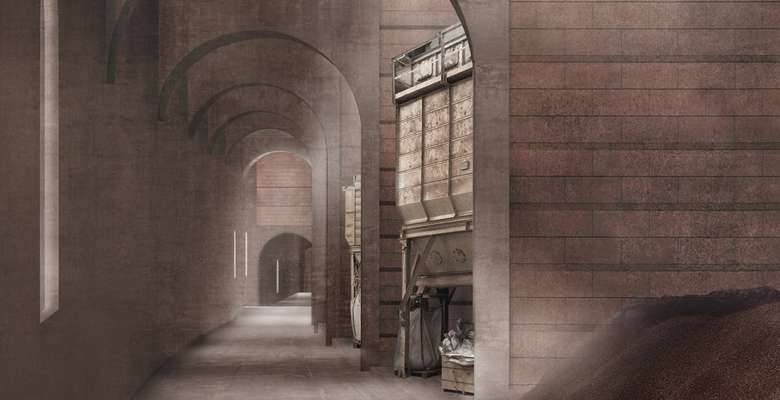
The future of architecture is likely to happen in a post-oil world. A context with an increasing geopolitical instability where oil-energy scarcity, global networks dependency and transportation costs for tools and materials will impact the core development of architectural projects.
Our vision explores a locally planned architecture as a necessary answer to a post-oil context. An architecture centered on the logic of the production of an easily available construction material. It proposes local and energy-efficient constructions. Architecture is defined as a both singular and universal environmental object. An object territorially located by its materiality and the process to build it.
Isolated territories are seen as laboratories to apply our vision. Indeed, with the example of Tristan Da Cunha island, we scientifically expose how we can appropriate local unobvious resources, to set simple constructions in a place where economy of means and material is an absolute necessity.
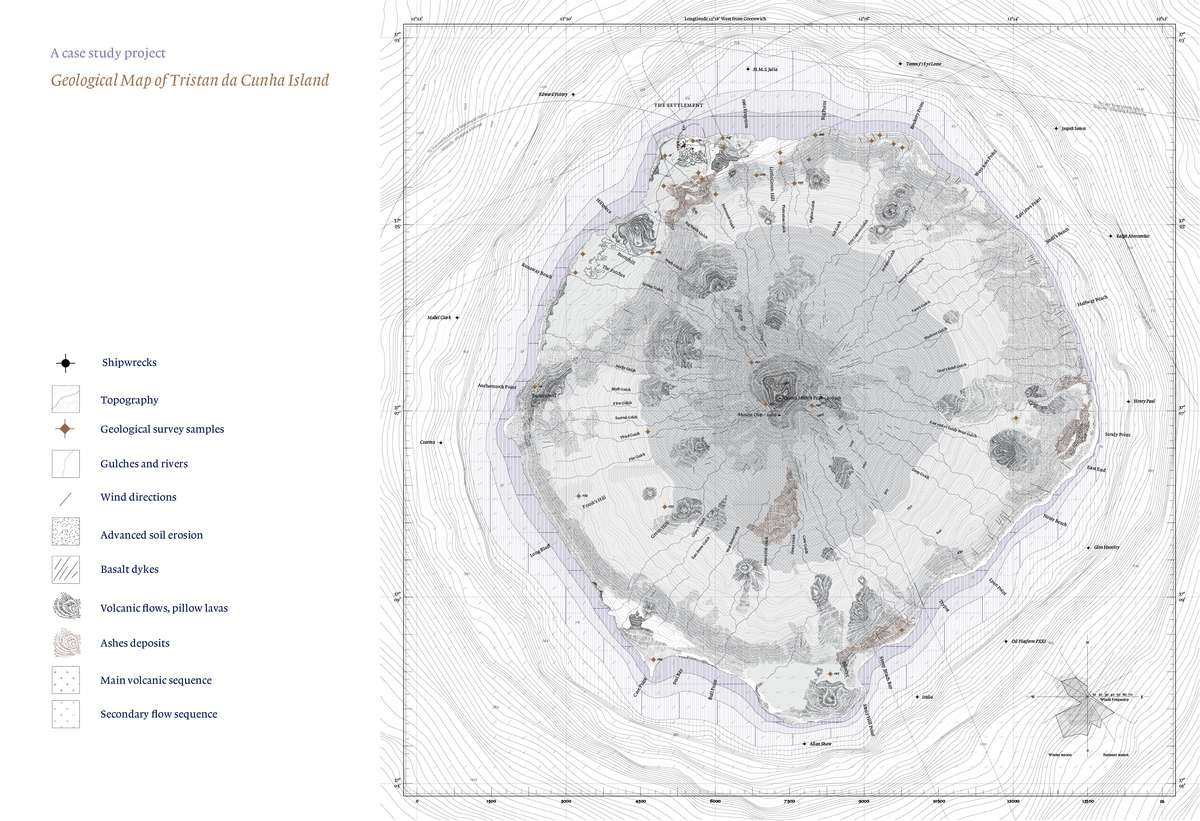
Geological Map of Tristan da Cunha Island.
With a population of 268 souls living in the middle of the South-Atlantic Ocean, Tristan da Cunha is known as the most remote inhabited island on earth. Without an airport or harbor facility, this British volcanic island is only accessible by boat which is 8 days ride of the South-African coast. Thus, its extreme isolation is a perfect context to explore local, post-oil building strategies.
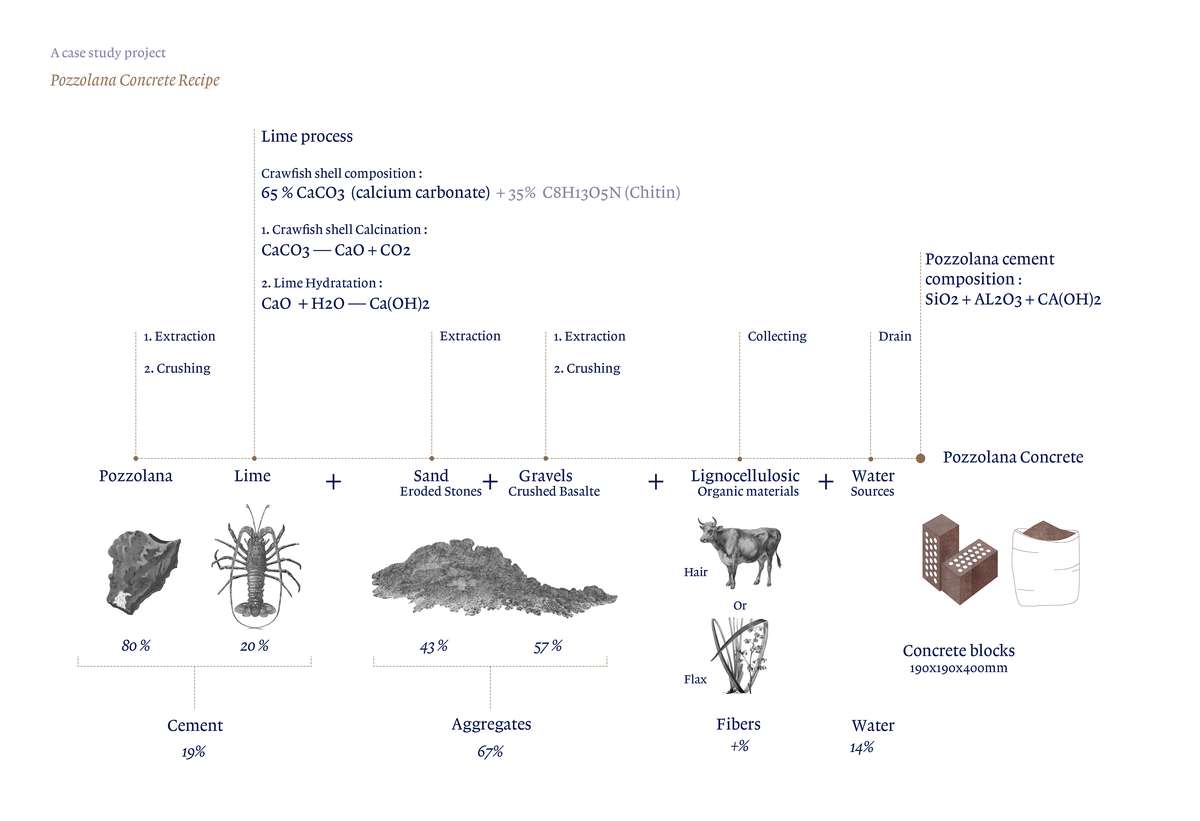
Genius Loci, Pozzolana Concrete Recipe.
A holistic study of the island allowed us to highlight the properties of volcanic pozzolana ashes, basalt stones and lobster shell, three of the few abundant resources present on the island. Based on an antique concrete recipe, they merge together to create a locally produced cement, a material symbolizing the identity of the place and the continuous dialogue between matter and man.
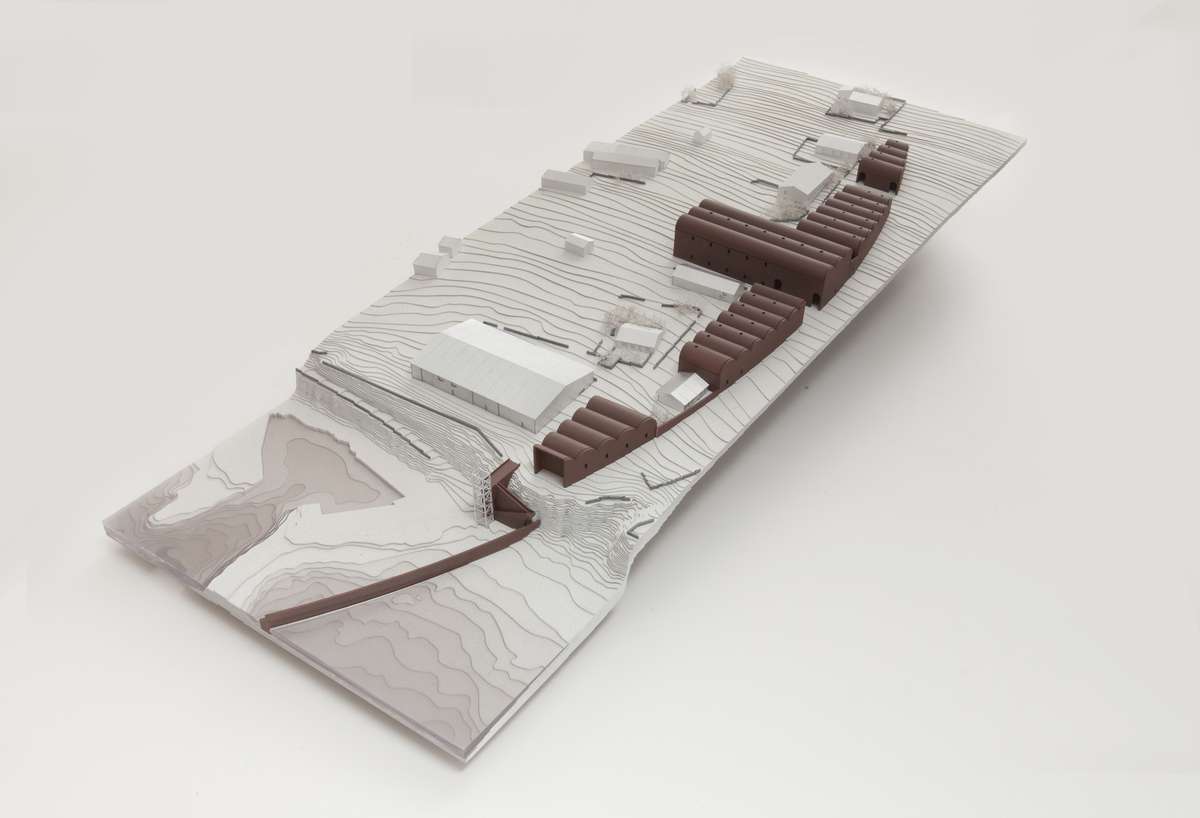
On-Site Planning with the community / Model Picture: Florian Amoser.
The material dictates its law, and the architectural project takes its shape. Structured around a cement plant, a community workshop, and a pier, it recasts the relationship between men and the island material that supports them.
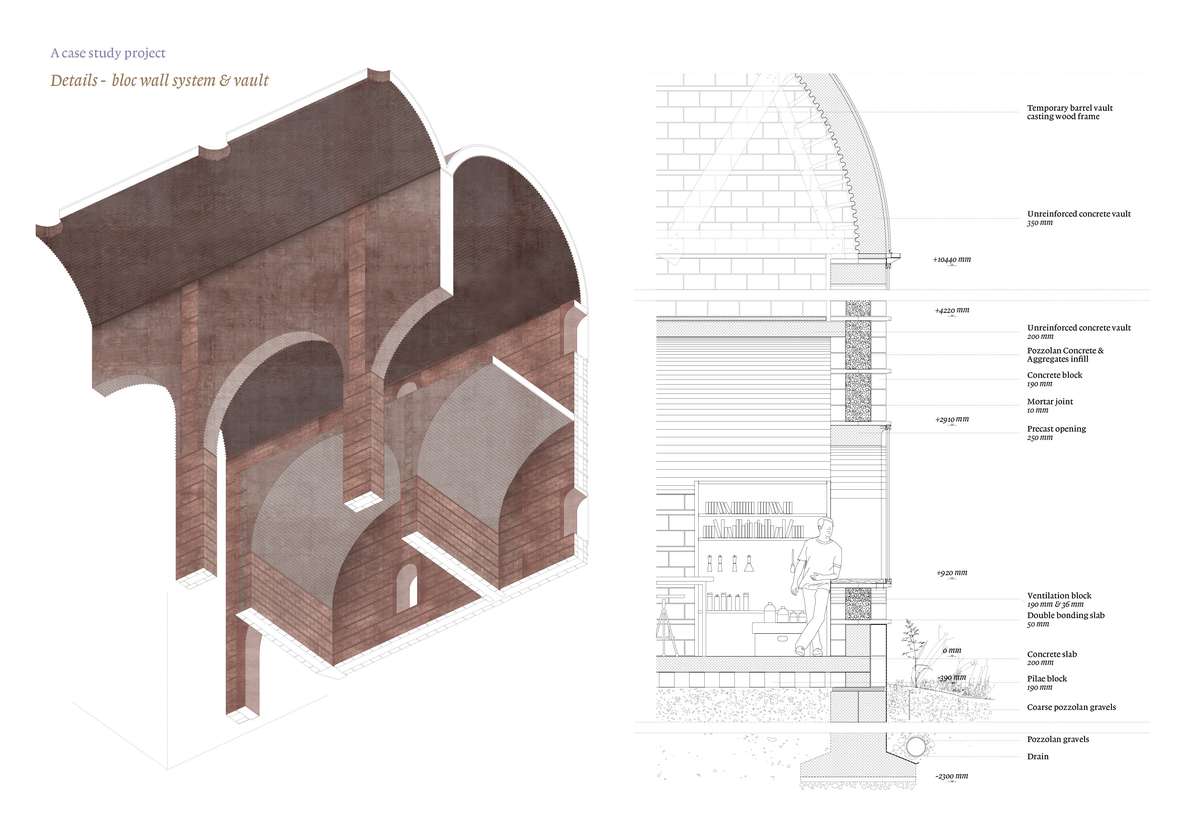
A volcanic and Insular Grammar.
The construction is designed to avoid the use of reinforced concrete in order to reduce any kind of material importation such as steel mesh. Thus, the architectural language resulting of this logic finds its forms in the grammar of its material. It is a volcanic and insular grammar, at once singular and universal.
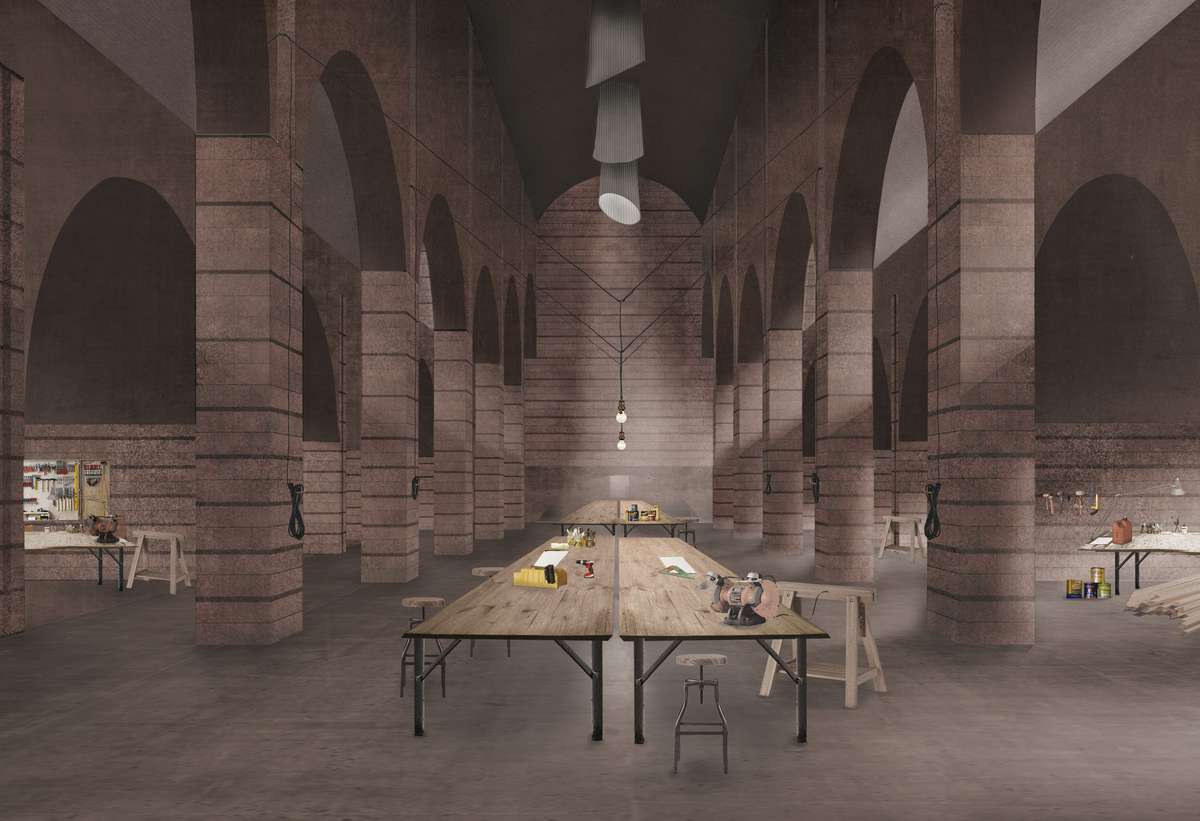
The Community Workshop.
The project offers the possibility of a constructive autonomy. Strategically located, the community workshop is both a place of production and a central piece to promote the sharing and exchanges within the island community. It also leads the way for new basic democratic rules.
Learning from Isolated Territories.
Learning from Isolated Territories.

The future of architecture is likely to happen in a post-oil world. A context with an increasing geopolitical instability where oil-energy scarcity, global networks dependency and transportation costs for tools and materials will impact the core development of architectural projects.
Our vision explores a locally planned architecture as a necessary answer to a post-oil context. An architecture centered on the logic of the production of an easily available construction material. It proposes local and energy-efficient constructions. Architecture is defined as a both singular and universal environmental object. An object territorially located by its materiality and the process to build it.
Isolated territories are seen as laboratories to apply our vision. Indeed, with the example of Tristan Da Cunha island, we scientifically expose how we can appropriate local unobvious resources, to set simple constructions in a place where economy of means and material is an absolute necessity.
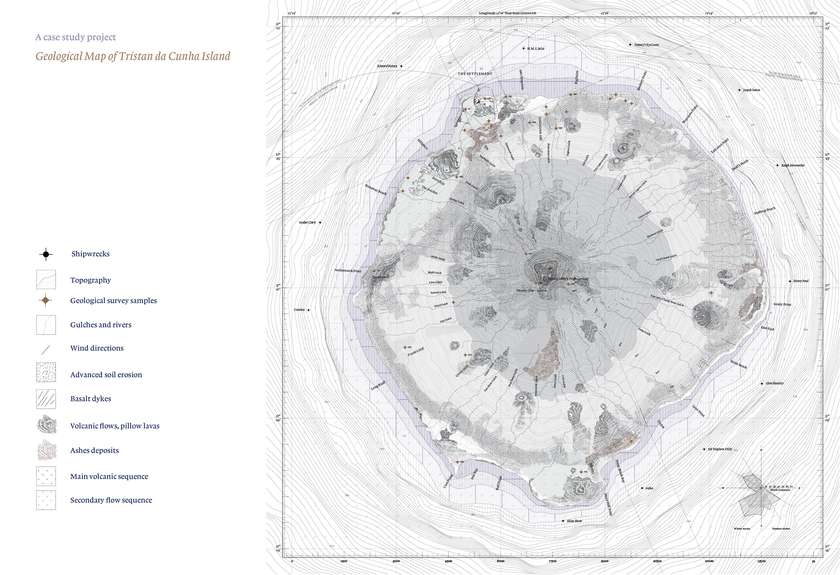
Geological Map of Tristan da Cunha Island.
With a population of 268 souls living in the middle of the South-Atlantic Ocean, Tristan da Cunha is known as the most remote inhabited island on earth. Without an airport or harbor facility, this British volcanic island is only accessible by boat which is 8 days ride of the South-African coast. Thus, its extreme isolation is a perfect context to explore local, post-oil building strategies.
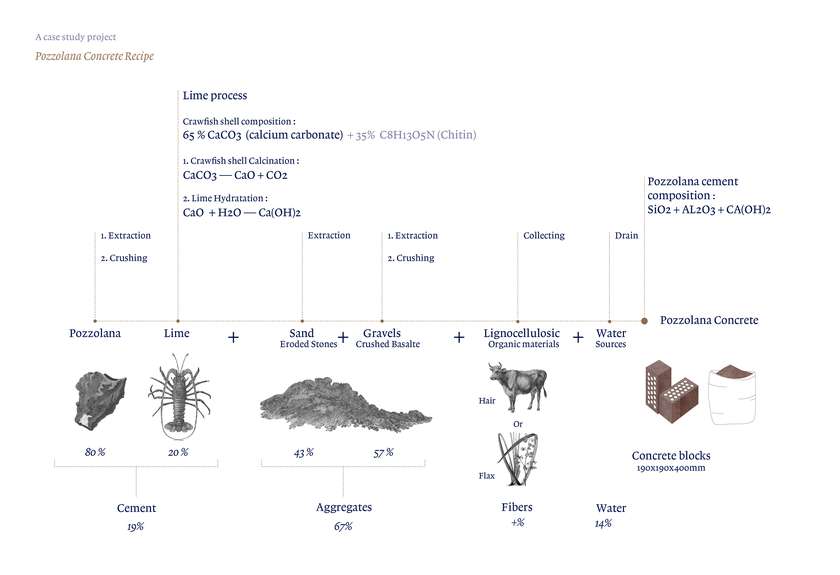
Genius Loci, Pozzolana Concrete Recipe.
A holistic study of the island allowed us to highlight the properties of volcanic pozzolana ashes, basalt stones and lobster shell, three of the few abundant resources present on the island. Based on an antique concrete recipe, they merge together to create a locally produced cement, a material symbolizing the identity of the place and the continuous dialogue between matter and man.
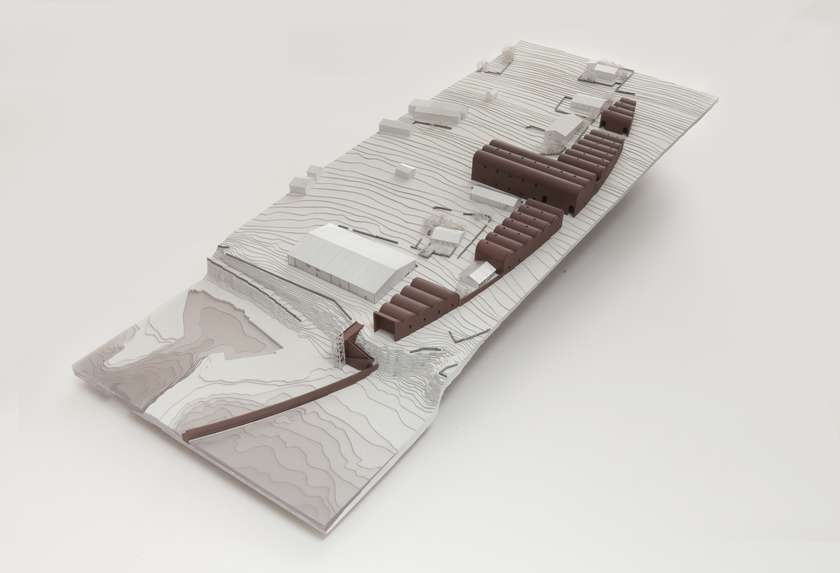
On-Site Planning with the community / Model Picture: Florian Amoser.
The material dictates its law, and the architectural project takes its shape. Structured around a cement plant, a community workshop, and a pier, it recasts the relationship between men and the island material that supports them.
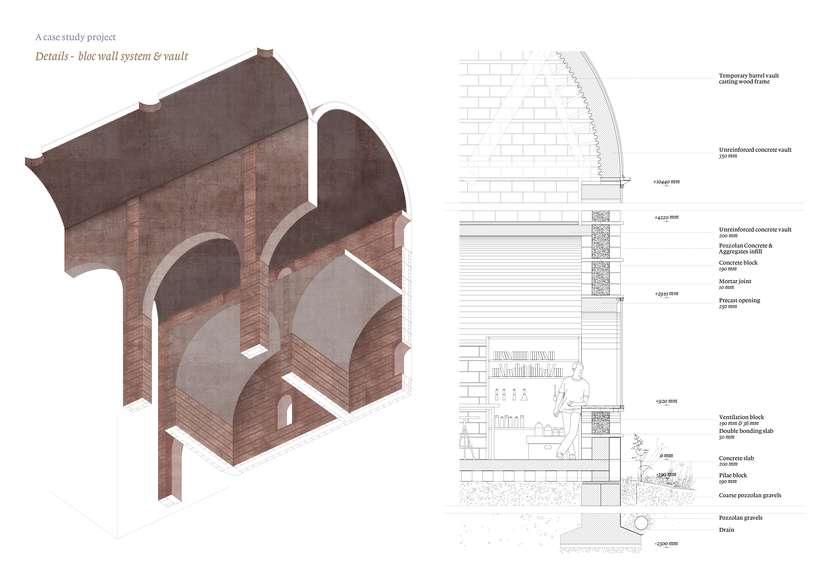
A volcanic and Insular Grammar.
The construction is designed to avoid the use of reinforced concrete in order to reduce any kind of material importation such as steel mesh. Thus, the architectural language resulting of this logic finds its forms in the grammar of its material. It is a volcanic and insular grammar, at once singular and universal.
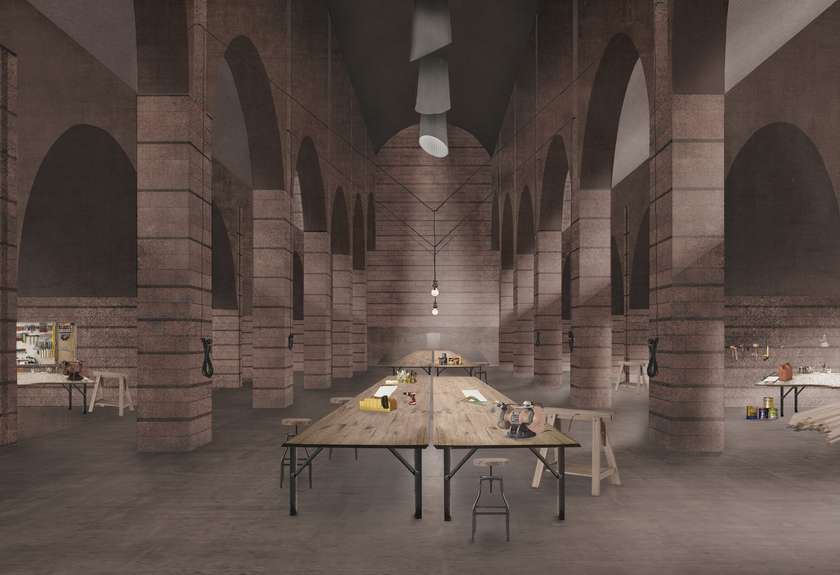
The Community Workshop.
The project offers the possibility of a constructive autonomy. Strategically located, the community workshop is both a place of production and a central piece to promote the sharing and exchanges within the island community. It also leads the way for new basic democratic rules.